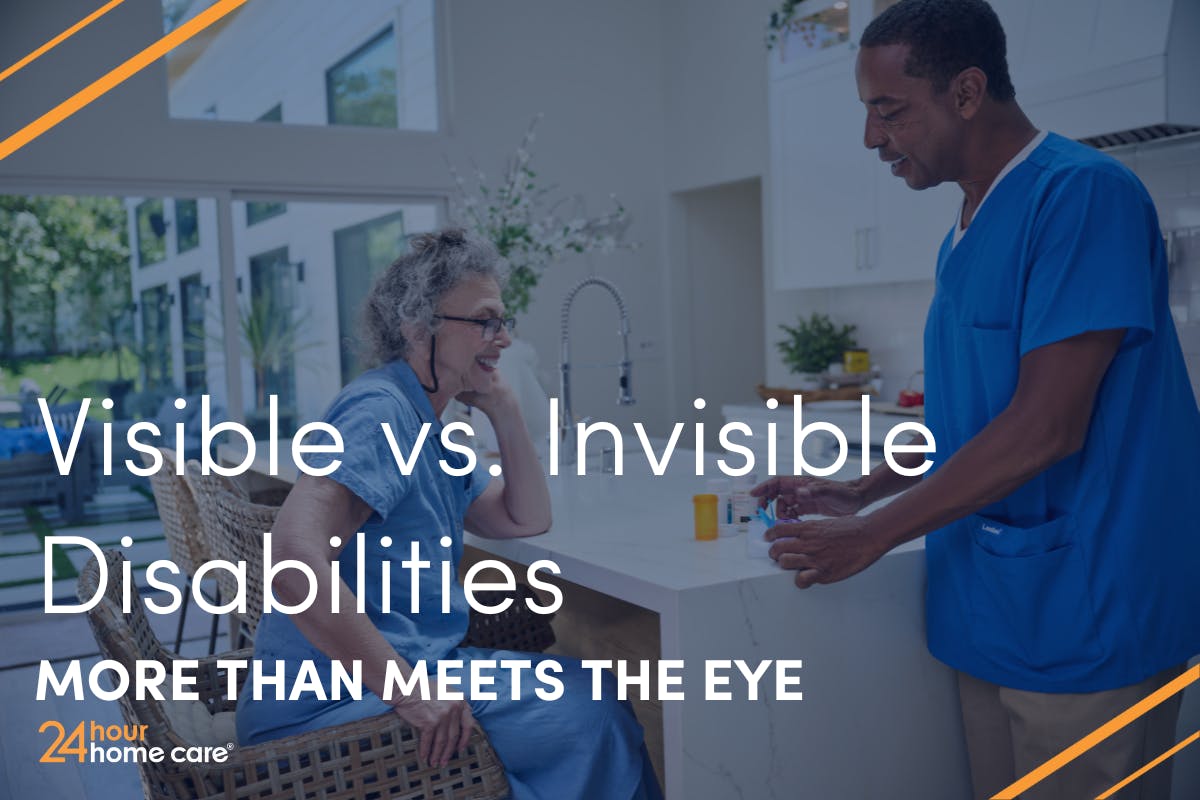Visible vs. Invisible Disabilities: More Than Meets the Eye
Did you know that disabilities can be invisible? This can mean there are disabilities that do not present themselves in a physical form. The CDC reports that 61 million people in the U.S. have a disability.

There is a lot more to disabilities than meets the eye. It's common for the public to have a specific view of what a person with a disability may look like. According to the CDC, a disability is defined as “any condition of the body or mind (impairment) that makes it more difficult for the person with the condition to do certain activities (activity limitation) and interact with the world around them (participation restrictions).”
Often, the population at large associates a person with a disability with mobility aids and specially designed architecture. This can include wheelchairs, canes, grab rails, designated parking spaces, tramps, and other mobility-specific designs. However, as was defined above, this is a very narrow scope of what constitutes a person with a disability.
Did you know that disabilities can be invisible? This can mean there are disabilities that do not present themselves in a physical form. The CDC reports that 61 million people in the U.S. have a disability. Of those 61 million, only 6% use a visible aid, such as a cane, wheelchair, or other transport device. That means 94% of people with a disability in the United States do not have an obvious piece of equipment (like the ones mentioned above) showing they have a disability.
A person may be experiencing difficulties with the activities of daily living, but you would never know by looking at them. Activities of daily living include personal grooming, eating, general housekeeping, and getting dressed. A person you interact with could have a disability, and you would never know by just looking at them.
For example, developmental disabilities fall on a spectrum. They are not always visible and will present differently in every individual. Some people with a developmental disability may have tremors while others don’t. Other individuals may not have a full range of motion while some can only move certain parts of their body; it’s very important to remember that a developmental disability will never look the same on two different people.
Common examples of disabilities that can have visual representation include:
- Autism
- Down Syndrome
- Fetal Alcohol Syndrome
- Tourettes Syndrome
- Amputations
- Paralysis
- Cerebral Palsy
- Muscular Dystrophy (MD)
- Multiple Sclerosis (MS)
On the flipside, invisible disabilities may have side effects that may affect the way an individual moves, thinks, hears, speaks, or interacts with others.
It's important to remember that invisible disabilities also fall on a spectrum. Two people with Lyme Disease may have completely different symptoms. These invisible disabilities may include:
- ADD
- ADHD
- Anxiety
- Bipolar
- Depression
- Ehlers-Danos Syndrome
- Fibromyalgia
- Lyme Disease
- OCD
- Asperger’s
- Diabetes
- Other Chronic Illnesses
No two people with a disability will look alike. There is no “one size fits all” approach to identifying a person with a disability. In fact, you should never assume a person has a disability. Wait until they feel comfortable enough to share their status with you. Too often, people with a disability are subject to bullying and harassment.
Remember to be patient, treat others with kindness, and to stand up for people when they may need your help. Just because the disability is not evident does not mean it does not exist. Be kind to everyone!
